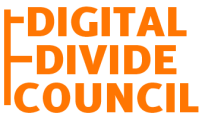Bridging the Digital Divide: How Fintech is Empowering Small Businesses
In today’s digital age, access to technology and financial services is critical for small businesses looking to thrive. However, the digital divide—the gap between those who have access to digital tools and those who don’t—remains a significant barrier, especially for small businesses in underserved areas. This divide not only limits access to information but also hinders the ability of small businesses to secure financing.
The Role of Fintech in Closing the Gap
Fintech, short for financial technology, has the potential to significantly reduce this gap by offering small businesses easier access to financing. Traditional banks have typically required extensive documentation, high credit scores, and long histories of operation to approve loans. Many businesses, particularly those in underserved areas, don’t meet these criteria. This is where fintech steps in, providing alternative financing solutions that are more inclusive.
By leveraging technology, fintech lenders can analyze a variety of data points that go beyond the traditional credit score, including online transaction histories and customer reviews. This allows businesses that might be excluded from traditional financing models to obtain the capital they need to grow.
Benefits of Fintech for Small Businesses in Underserved Communities
- Accessibility: Fintech platforms offer online applications that make it easy for small businesses in rural or underserved areas to apply for financing. Without the need for physical bank visits, these businesses can access capital through a simple online interface.
- Faster Loan Approvals: Fintech companies often approve loans within hours or days, compared to the weeks or months it can take through traditional banks. This quick turnaround is especially beneficial for businesses that need immediate funds to stay competitive or seize new opportunities.
- Flexible Terms: Unlike traditional banks, fintech lenders offer a variety of financing options, including short-term loans, lines of credit, and merchant cash advances. This flexibility allows small businesses to choose a financing product that best fits their unique needs.
- Lower Barriers to Entry: Many small businesses in underserved areas lack extensive credit histories or the collateral needed for traditional loans. Fintech platforms provide alternative methods for evaluating creditworthiness, making it easier for these businesses to secure funding.
Challenges to Consider
While fintech provides numerous benefits, it’s important for small businesses to carefully consider the terms of their financing agreements. Fintech loans may come with higher interest rates, particularly for businesses with lower credit scores or riskier financial profiles. Additionally, some fintech lenders may not be subject to the same level of regulatory oversight as traditional banks, making it important for borrowers to review the terms carefully.
Real-World Impact of Fintech
Take, for example, a small business in a rural community with limited access to traditional banks. Thanks to fintech platforms like Credibly, this business can apply for financing online, receive approval within hours, and have funds deposited directly into their account. This not only helps them overcome geographical barriers but also provides a path to growth that would have been difficult through traditional means.
Conclusion
Fintech has emerged as a powerful tool in bridging the digital divide, offering small businesses in underserved communities the financial access they need to thrive. By embracing these technological advancements, businesses can overcome many of the hurdles posed by traditional banking systems and secure the funding they need to expand and innovate.
As fintech continues to grow and evolve, it will play an increasingly important role in leveling the financial playing field, ensuring that all businesses—regardless of their location or background—have the opportunity to succeed.
